Main menu
Common skin conditions

NEWS
Join DermNet PRO
Read more
Quick links
Author: Dr Amanda Oakley, Dermatologist, Hamilton, New Zealand, 1997. Updated September 2015.
" data-index="1" alt="Go to Introduction
" onclick="event.preventDefault();document.getElementsByTagName('h2')[(1 - 1)].scrollIntoView({behavior: 'smooth',block: 'start'});">Introduction
" data-index="2" alt="Go to Acute blistering diseases
" onclick="event.preventDefault();document.getElementsByTagName('h2')[(2 - 1)].scrollIntoView({behavior: 'smooth',block: 'start'});">Acute blistering diseases
" data-index="3" alt="Go to Chronic blistering diseases
" onclick="event.preventDefault();document.getElementsByTagName('h2')[(3 - 1)].scrollIntoView({behavior: 'smooth',block: 'start'});">Chronic blistering diseases
E-lecture
A blistering disease is a condition in which there are fluid-filled skin lesions.
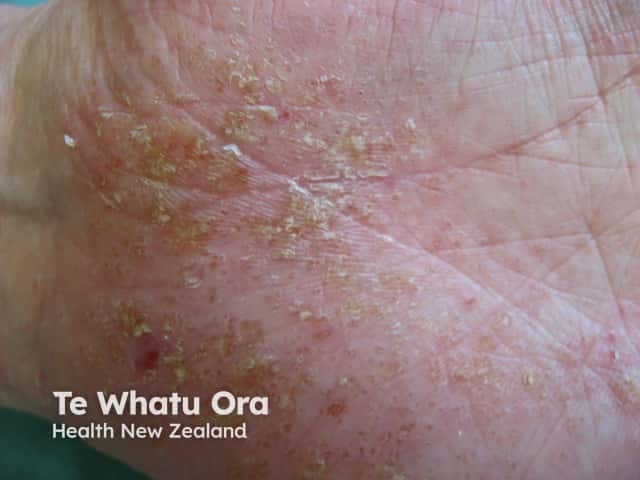
Vesicles

A bulla

Crust
Acute blistering diseases can be generalised or localised to one body site and are due to infection or inflammatory disorders. Although most commonly eczematous, generalised acute blistering diseases can be life-threatening and often necessitate hospitalisation.
Acute blistering conditions should be investigated by taking swabs for bacterial and viral culture. A skin biopsy may be helpful in making a diagnosis.
Acute febrile neutrophilic dermatosis
Atypical enterovirus infection

Acute febrile neutrophilic dermatosis
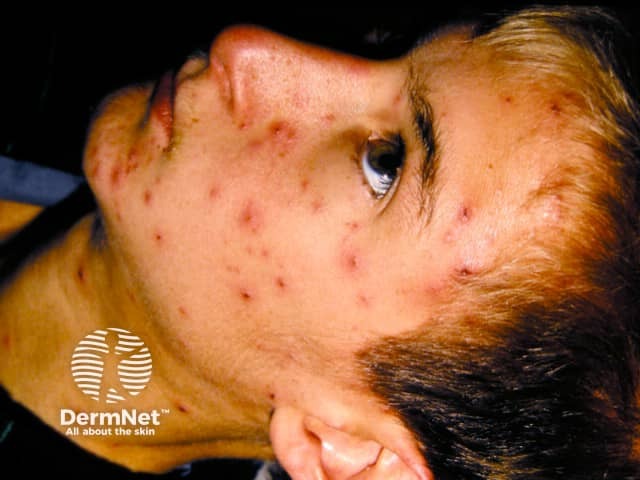
Atypical enterovirus infection
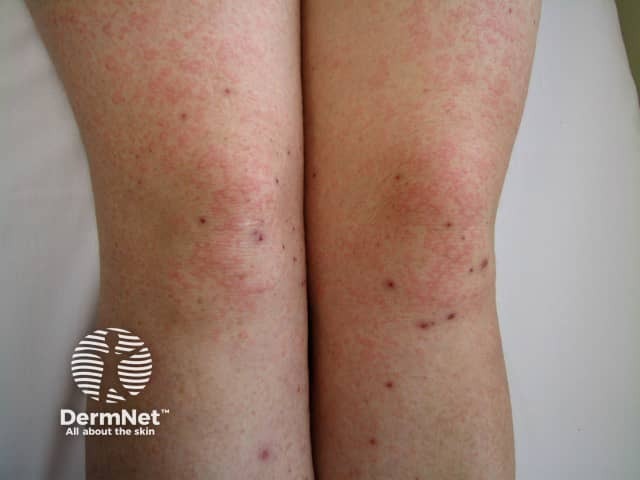
Chickenpox/varicella
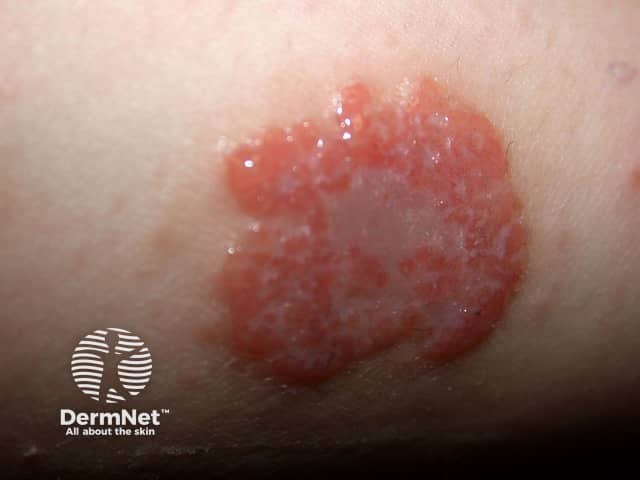
Discoid eczema
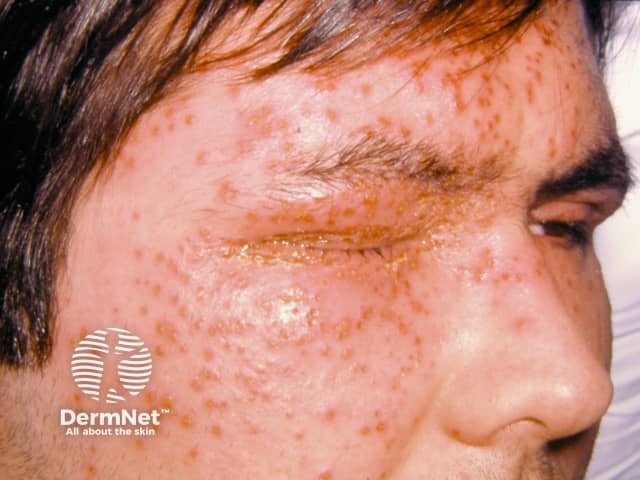
Eczema herpeticum
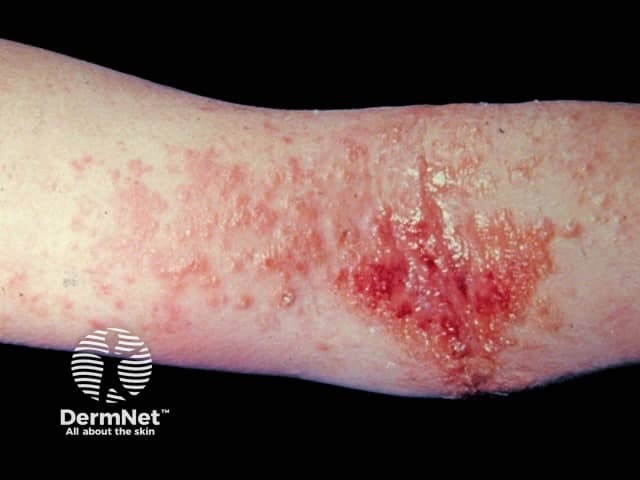
Atopic dermatitis
Stevens-Johnson syndrome / toxic epidermal necrolysis
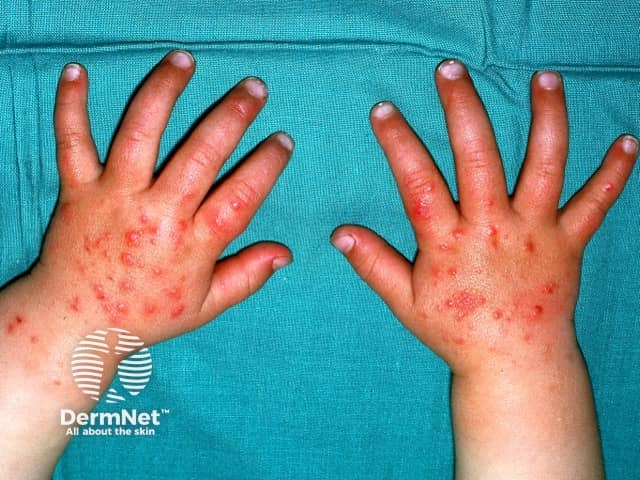
Polymorphic light eruption
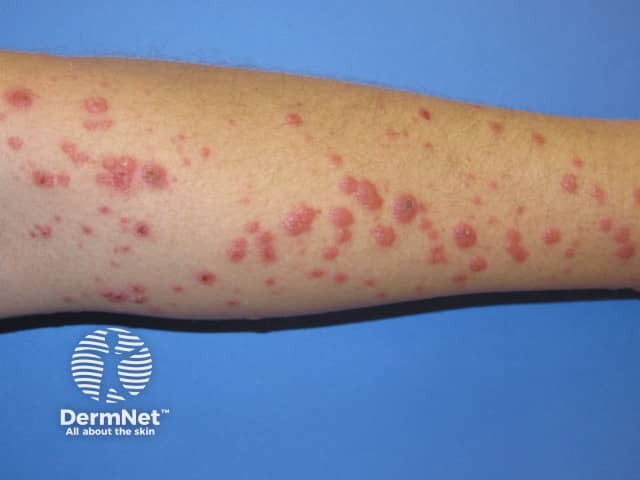
Erythema multiforme

Stevens-Johnson syndrome / toxic epidermal necrolysis
Drug hypersensitivity syndrome
Staphylococcal scalded skin syndrome
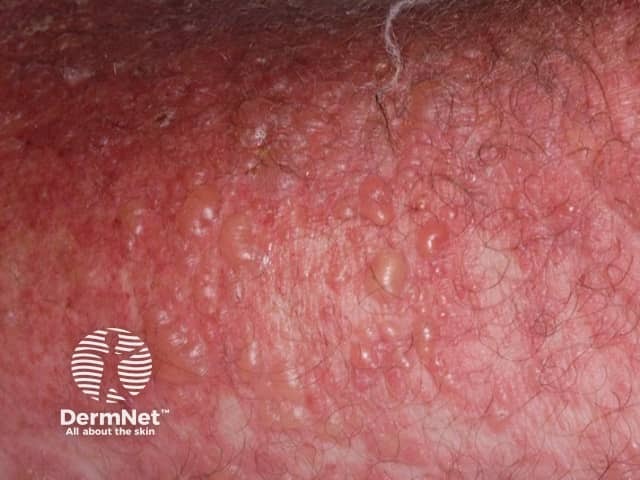
Drug hypersensitivity syndrome
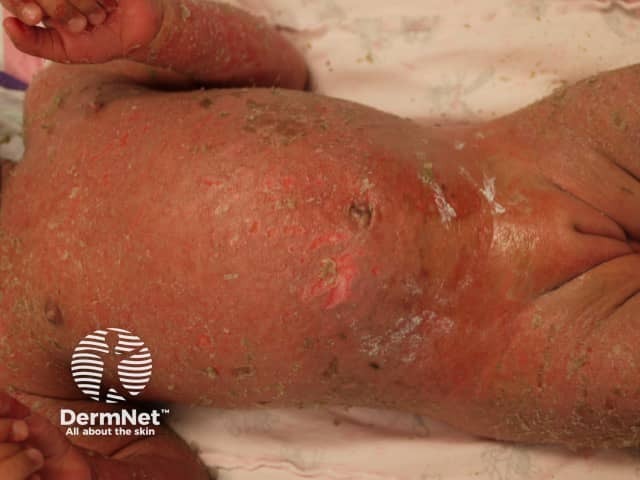
Staphylococcal scalded skin syndrome
Acute dermatitis

Plant dermatitis
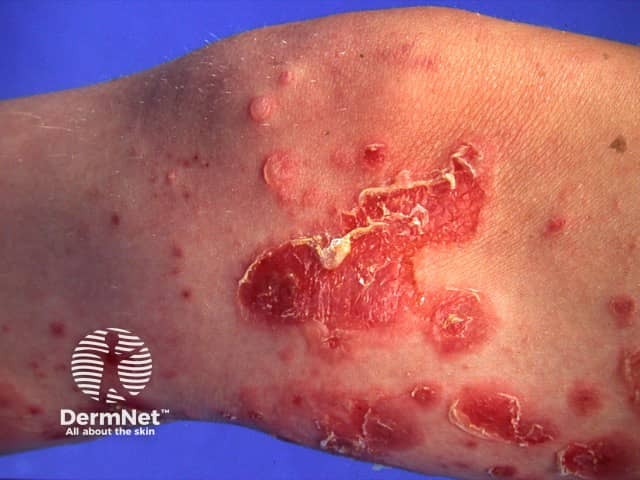
Bullous impetigo

Chilblains
Enteroviral vesicular stomatitis
Clears in a few days
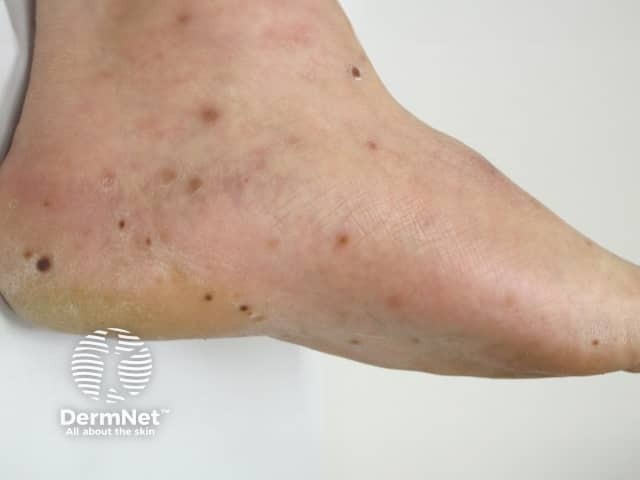
Enteroviral vesicular stomatitis

Erysipelas

Fixed drug eruption

Herpes simplex

Herpes zoster
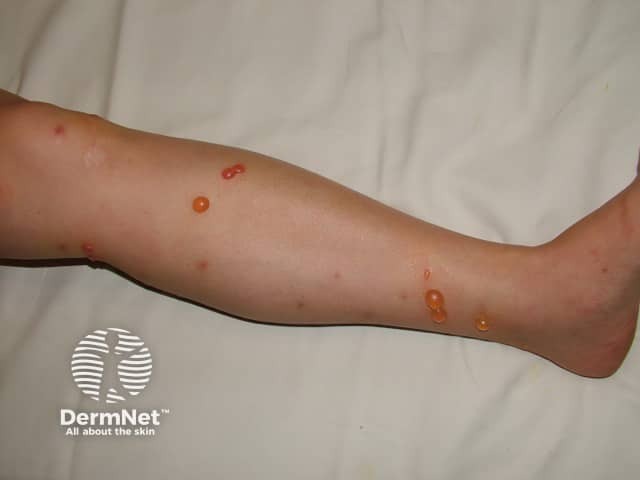
Insect bites and stings
Transient acantholytic dermatosis
Trauma
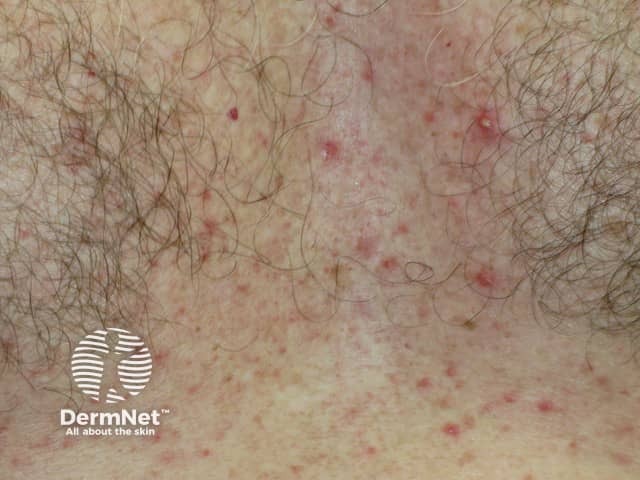
Miliaria

Transient acantholytic dermatosis
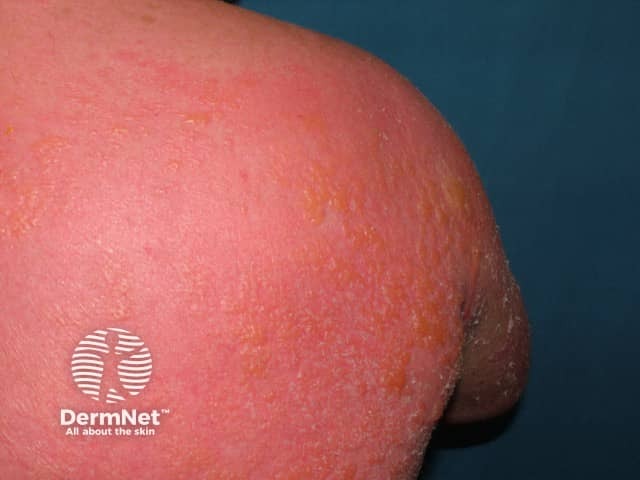
Trauma-ultraviolet radiation
Diagnosis of chronic blistering diseases often requires skin biopsy for histopathology and direct immunofluorescence. A blood test for specific antibodies (indirect immunofluorescence) may also prove helpful in making the diagnosis of an immunobullous disease.
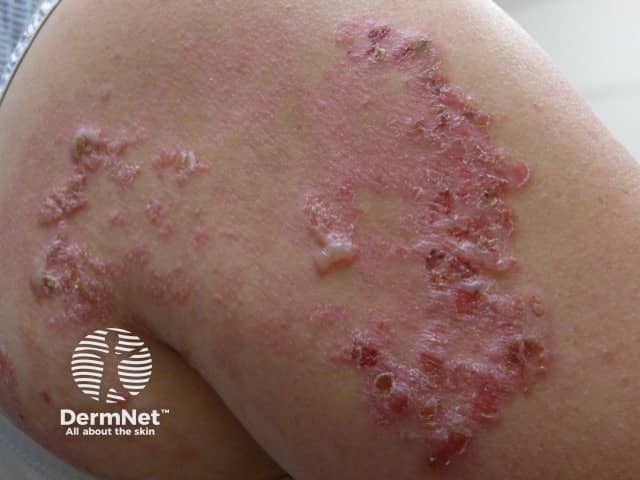
Epidermolysis bullosa

Mastocytoma
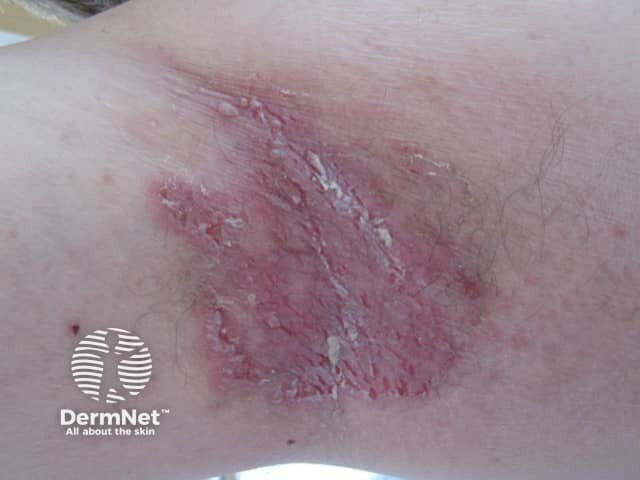
Benign familial pemphigus
Bullous systemic lupus erythematosus
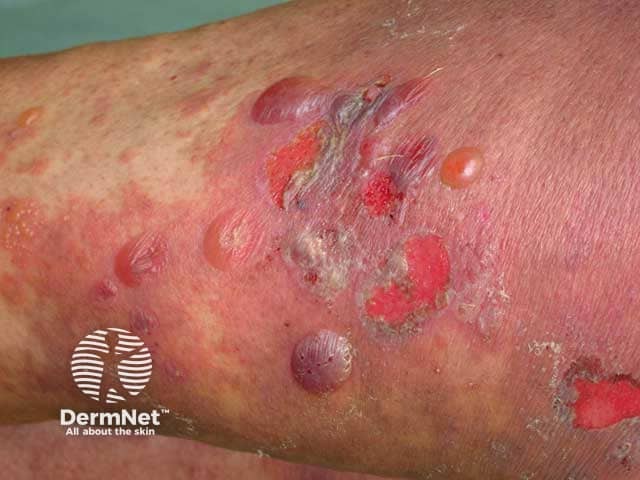
Bullous pemphigoid
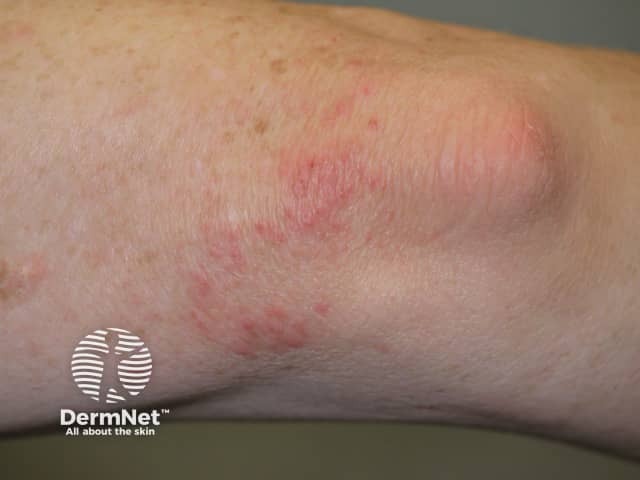
Dermatitis herpetiformis
Other immunobullous diseases

Pemphigoid gestationis

Pemphigus vulgaris

Porphyria cutanea tarda